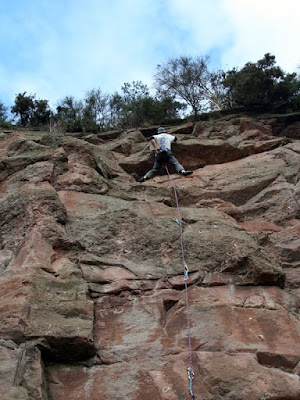Training Motivation
This time of year naturally seems to see the most psyched and virulent spell of training, with the longer days stretching our anticipation and the usual eternal optimism of the Scottish climber that this year is going to be a blinder - better train for it! Getting up to speed with the sport climbing is the usual priority and in March the crowds descend on Hamish Ted's... Is there a more popular sports climb in Scotland? I doubt it.
Personally motivation to train means I have new things to go at. Plus a three week bout of flu and migraines have left me desperate to get out or at least to train with a view to these big stones and walls awaiting the sending winds and blue sky days. As an inveterate hunter of boulders, I have a few plums tucked away in some very obscure places, though some are not so remote and I pass on as many as I keep to myself... I'd rather see folk enjoying new rock where I know the climbing is beyond me. So watch out for a few pointers soon on this blog, I'll unload a few big stones with grid refs.
It would be good to see folk exploring a bit deeper into the glens and higher up the hills - most of the big walls are known of, but I guess a boulder is now the new microcosm of personal discovery in technical climbing, maybe it was inevitable - I wonder what Cunningham and Smith and even Raeburn would have thought of it all? And is trad dead, with only the weird metaphysics of headpointing (bouldering with death) the rarified realm of a chosen few? Who knows where climbing is heading...
This year, as I struggle to get back into the harness and train to some degree of competence, bouldering is taking a back seat. I'll be touring round the sports crags and big walls of Scotland with a view to the next few publications from Stone Country.
In the meantime, I'm filling a bottle with my customised 'special' sports drink and heading to the 45 board. Circuits and circles...



